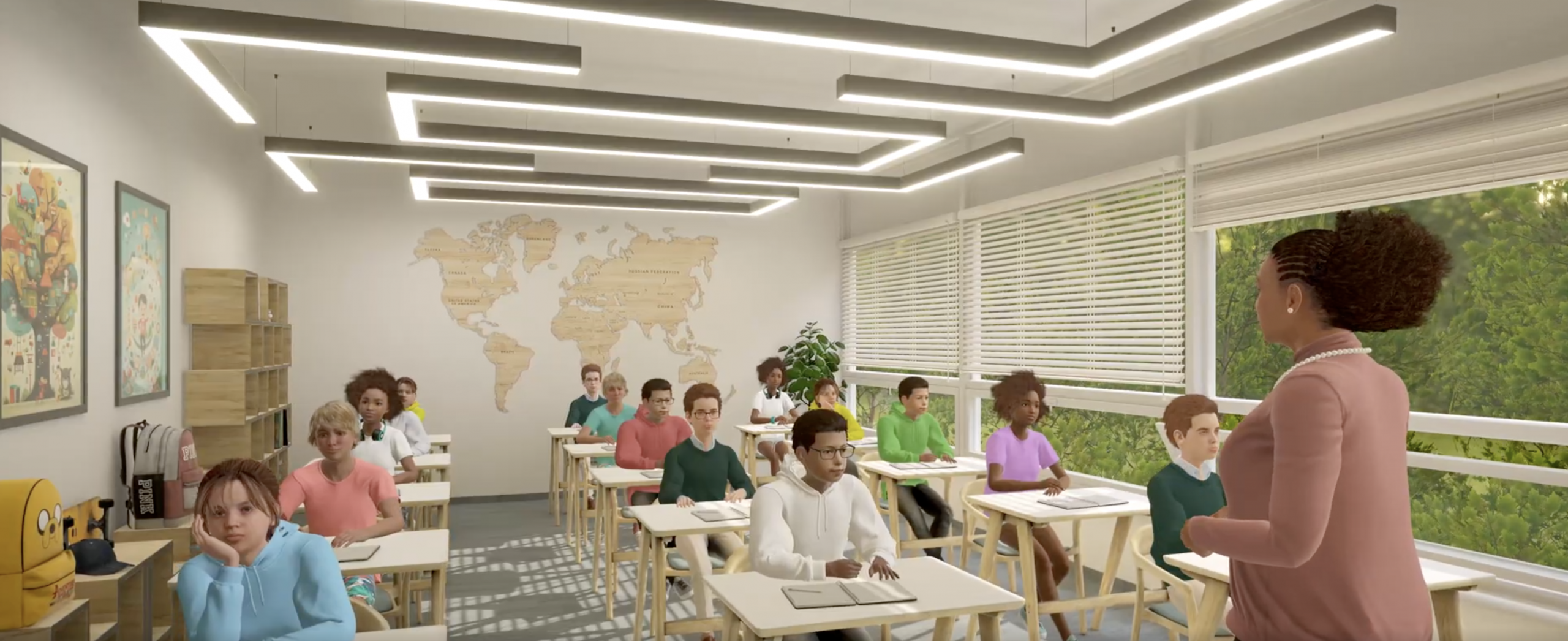Immersive ADHD XR Simulation: Building Awareness Through Empathy
Table of Contents
The ADHD XR Simulation, developed by Lucid Reality Labs, is an immersive XR training experience that fosters public awareness and empathy toward individuals living with ADHD. This groundbreaking experience allows users to step into the perspective of a child with ADHD and gain first-hand insight into the daily challenges of attention, impulsivity, and sensory overload.
By providing an emotional, experiential understanding rather than abstract knowledge, the simulation helps educators, caregivers, and healthcare professionals connect with those affected by ADHD on a deeper, more compassionate level. The goal is to increase awareness, reduce stigma, and inspire better communication and support within families, schools, and communities.
The Challenge
ADHD is one of the most common neurodevelopmental disorders, affecting an estimated 129 million children worldwide, with symptoms often continuing into adulthood. It is characterised by patterns of inattention, hyperactivity, and impulsivity that interfere with daily functioning and development. Without proper understanding, individuals with ADHD can face academic difficulties, strained relationships, emotional distress, and challenges in the workplace.
Despite its prevalence, misconceptions about ADHD persist. Many people still misinterpret behaviours as disobedience or lack of discipline rather than symptoms of a medical condition. Early recognition and intervention are crucial to helping individuals with ADHD reach their full potential, but awareness and empathy remain limited. This gap highlights the need for innovative approaches that allow people to truly understand what it feels like to live with ADHD.
The XR Solution
Lucid Reality Labs designed the ADHD XR Simulation as a transformative educational tool that blends science, technology, and human emotion. Developed in collaboration with ADHD experts, the simulation recreates the environment and sensory experiences of a third-grade child during a typical classroom session.
Users are immersed in a lifelike XR environment that mirrors how ADHD alters perception. Everyday sounds become distractions, colours intensify, and movements draw constant attention. The environment is designed not only to educate but also to evoke empathy — helping users feel the frustration, mental fatigue, and cognitive overload that come with navigating a world that constantly demands focus.
Beyond awareness, the simulation also serves as a practical resource for professionals working in education, psychology, and child development. It offers a safe, controlled environment where participants can explore behavioural responses, identify triggers, and gain a more nuanced perspective on attention and sensory regulation. This holistic approach positions the experience as both an empathy-driven awareness tool and a hands-on learning platform for researchers, caregivers, and policy advocates aiming to improve inclusion and early support for children with ADHD.
This XR experience acts as both an awareness campaign and an educational tool. It equips teachers, caregivers, and researchers with a new way to experience ADHD from the inside out, reshaping how they approach communication, teaching, and care.
The Solution Concept
The ADHD XR Simulation helps challenge these misconceptions by allowing users to experience the condition first-hand, making awareness more tangible and impactful. Moreover, although no cure exists, early diagnostics and treatment may lessen the symptoms and improve the child’s development. Extended Reality (XR) plays a significant role in facilitating this understanding.
Developed in collaboration with experts, the VR Simulation offers a unique perspective, allowing users to step into the shoes of a child with ADHD, recreating a third-grade male student’s experiences, emotions, and reactions and providing a first-hand understanding of ADHD and depicting an everyday situation where the sensority of the surroundings is significantly amplified, compared to the perception of a person not affected by ADHD.

Experience Design and Features
The ADHD XR Simulation environment recreates this experience with scientific precision and emotional depth, ensuring a true-to-life perspective.
The environment is set in a third-grade classroom where users can explore freely. As they look around, their gaze triggers four distinct distractions — each based on real sensory stimuli that children with ADHD often experience. These interruptions happen dynamically, recreating the unpredictable nature of attention shifts.
The digital teacher is animated using motion capture to replicate realistic gestures and emotional responses. Other students’ actions are randomised, contributing to a sense of sensory overload. Each scenario was developed with input from clinical experts and behavioural specialists, illustrating key symptoms such as restlessness, forgetfulness, hyperfocus, and disorganisation.
The flexible architecture of the simulation allows future updates, ensuring that new insights and learning modules can be easily integrated.
Impact and Results
The ADHD XR Simulation demonstrates how technology can deepen understanding and compassion.By allowing people to step into the shoes of a child with ADHD, it bridges the gap between observation and experience.
Educators who participate in the simulation report greater empathy and improved ability to tailor their teaching methods. Caregivers and parents gain new awareness of how ADHD affects focus and emotional regulation. Researchers and advocacy groups use the experience as an awareness tool to combat stigma and foster early intervention.
This project reflects Lucid Reality Labs’ ongoing commitment to creating human-centred XR experiences that make a real social impact. By turning data into emotion and understanding, the ADHD XR Simulation transforms how society perceives neurodiversity and mental health challenges, promoting inclusion, compassion, and action.
*CHADD – Children and Adults with Attention-Deficit/Hyperactivity Disorder founded in 1987 in response to the frustration and sense of isolation experienced by parents and their children with ADHD.
